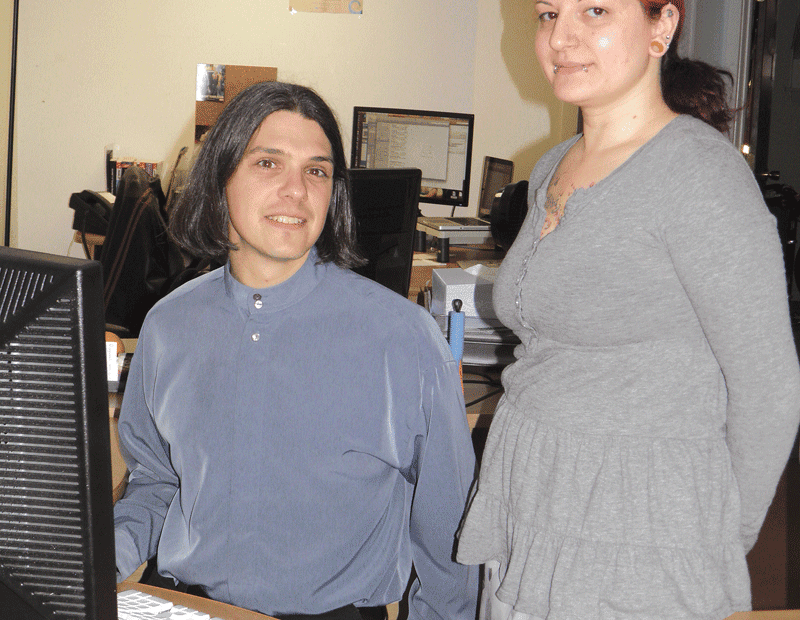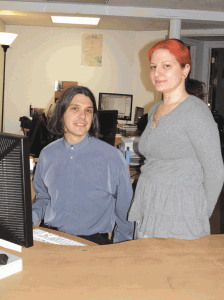
Instant Gratification
Mobile Web Sites Provide Information Via a Simple Touch
Blair Winans gets many requests from business owners who tell him they want their Web site turned into an app.“I ask them whether they really need an app or whether they just need a mobile Web site,” said the principal and creative director of Winans Creative in Easthampton, which specializes in Web site design and development.
Technology is moving so quickly that, although many people are familiar with these terms, they don’t understand the real differences between them and what they can accomplish, Winans told BusinessWest. They also don’t know what makes sense for their business in terms of the cost/benefit ratio.
“Apps have become a buzzword,” he explained, “But there is a lot that goes into figuring out what someone needs, and it all comes down to functionality.”
Apps cost $20,000 or more to develop, and once they are in use, they are not easy to change. In addition, they must be approved by the iTunes store, then downloaded by people who want to use them, which makes them inappropriate for most small businesses. An idea is viable only if a company wants to provide a service that will become unique to its brand.
For example, a business might want to provide video tutorials that can be accessed via a mobile device, or a real-estate agency might want people to be able to see all their listings on a phone or tablet, Winans said. But many of these things can be accomplished via a mobile-optimized Web site, which is much more cost-effective than an app.
“You really need a high-level strategy to justify an app. Unless you have a revolutionary idea of how to connect with customers, it may not be worth the investment,” said Winans. “There are a million useless apps in the App Store, and if you can’t effectively answer the question, ‘why would someone download this?’ it is pointless to think about developing one.”
Rachael Frank concurs. “Unless your business is the size of Bank of America or Amazon, you probably cannot afford an app that will provide a return on your investment,” said the lead strategist for Gravity Switch in Northampton, which focuses on specialized technology development.
Still, most businesses have fallen behind the times in terms of keeping their Web sites updated, and could profit from technological advances.
“The whole world is playing catchup as Web development and technology has advanced so far in the last five years,” Winans said. “Ninety-nine percent of Web sites are not formatted for phones, and most people are still trying to get their Web site up to 2012 standards.”

Rachael Frank and Rob Archer say creating an effective Web site is not something that can be done once and left alone.
This occurs frequently because most Web sites were built to be viewed on a desktop computer or laptop with a full-size screen. “A Web site built for a desktop assumes that people have the height and width on their screen that make it easy for them to see everything,” Winans said. There is also information that can be accessed using a computer mouse that will not work with the touch of a thumb, such as a drop-down menu.
“Traditional Web sites can be cumbersome for people using mobile devices,” he continued. “If they are not formatted for mobile users, the bounce rate of people who visit them, then leave quickly, is high,” Winans said, explaining that the term ‘bounce rate’ refers to the speed at which people leave a site that is not user-friendly.
Options Galore
Mobile Web sites can be formatted so that the information people are searching for is literally at their fingertips. “You want to create a layout that gives people a friendly experience when they visit across multiple platforms,” Winans said.
The first step is to determine what mobile users who call up a site are looking for. For most businesses, this is their phone number and address. “If people are looking for a restaurant on a mobile device, they probably don’t care about your history or where your chef trained,” Frank said. “They want your menu, but they want to be able to view it in a way that can be seen well on a mobile device. And this not a PDF, which is for printing purposes.”
That format does work well for people on a desktop computer, Archer said. “But you need to provide multiple solutions and have a responsive design that looks good on a 3- by 5-inch screen as well as a 7-inch tablet.”
Frank told BusinessWest that a mobile site is a separate entity from a traditional site and, therefore, requires a different form of navigation.
“A responsive design will automatically adapt to the size of a mobile device and do things like load a smaller picture or change a layout,” she explained. “This technology has been built upon for the last 10 years.”
And providing this platform can make the difference between keeping or losing a prospective client.
“If you’re pulling in a lot of business from outside of your area, it is important for someone on a mobile device to have the ability to check your hours of operation,” Frank said. “If they can’t get the information instantly or access directions easily, they are likely to go somewhere else. You want to make it easy for people.”
Archer provided another example. If someone is walking around Northampton and knows the name of a restaurant but has no idea where it is located, he explained, that information needs to be easy to find on their smartphone.
Winans agrees, and says design is critical to making a site user-friendly. “Since a phone is small, you want to have big buttons to show specialized content,” he said, adding that a mobile site can be linked directly to Google Maps. “People on mobile devices are usually trying to find several pieces of information quickly, and a mobile site can provide a different layout and change their experience.”
Tuneups
Archer says the maintenance required on a Web site can be compared to the work necessary to keep up a home’s lawn or garden.
“If you let a backyard go, it will end up with weeds and molehills,” he explained. “You need to cut the grass, water it, and make changes according to the weather conditions. And, like the weather, the technology landscape is continually changing, so your business needs to change along with it to keep up with the times.
“A Web site is often the first impression people have of your business,” he continued, “so when they see it on a mobile device, it had better look good and work well.”
Archer advises business owners who have the ability to make changes to their site to make sure the Google Analytics program is turned on. Last June, a new feature was introduced that shows the breakdown between mobile and non-mobile visitor activity on a Web site, including what type of device people used to access it.
Even if the numbers of mobile users are small, they are bound to increase. According to a report by eMarketer, half of the U.S. population will be using mobile devices, rather than computers, to access the Internet in 2015.
“The days of instant gratification are upon us, and it’s not enough to simply have a Web site or application. You need to be able to deliver content to anyone, anywhere, on any device,” Winans said.
He told BusinessWest that creating a mobile-optimized site from an existing Web site is not expensive. “It can be done for under $1,000 using a standard design,” he said. “And a large portion of businesses could definitely benefit from simple upgrades to their Web site. They can make a big difference.”
A mobile site can also serve as a starting point for a business that is considering an app. “You don’t need to jump into everything head first. There are definitely varying levels and ways of approaching it to minimize the up-front investment,” Winans said.
But building on a Web site requires a solid foundation.
“A lot of people can’t even change the content on their home page,” he noted, adding that he advises people to make sure their site has been built using a framework that can be expanded.
“If you have a good content-management system, it will allow you keep building rather than tearing down the structure each time you want to change something,” he continued, adding that some businesses may eventually want to add options such as e-commerce or video blogging.
Unfinished Business
Frank reiterated the fact that many small businesses have lagged behind the times. “They haven’t assumed their Web presence is important enough to develop,” she said. “But they need to build it and let it grow.”
Archer agrees. “Technology continues to grow, and we don’t know what is coming next,” he said.
So, although the future is unknown, experts say businesses need to make their products and services available in a way that shows they care. And right now, that means extending a friendly hand — or, rather, a design made for a thumb.







